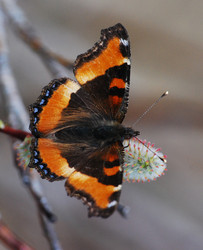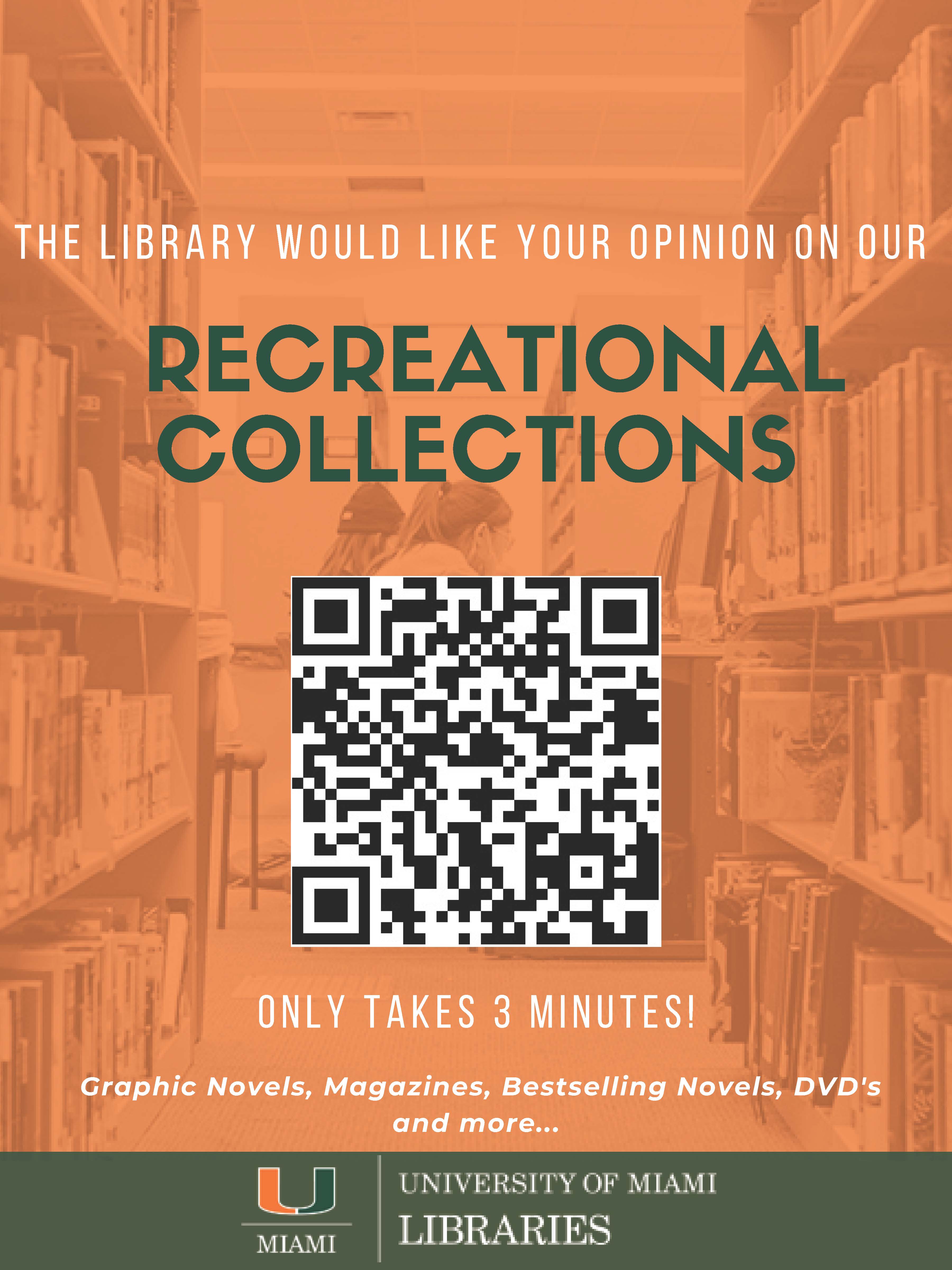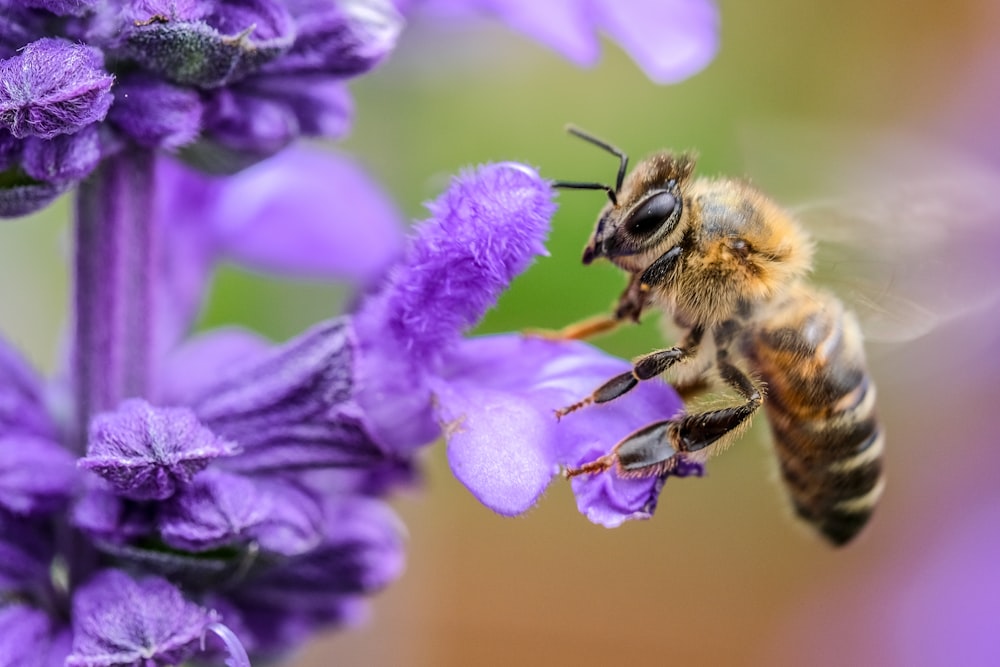
Welcome to the research guide for Biology! This guide is a great tool for finding information for research, collecting articles for classes, and broadening your knowledge of Biology. Each tab contains current and relevent resources for assisting you in collecting the best information for your project, interest, or research.

Saily Marrero
- Nursing & Health Studies, Biology, and Psychology Librarian
- sxm1838@miami.edu
- (305) 284-2040
- Biological Science (ProQuest)
This service indexes theoretical and applied research in biomedicine, biotechnology, zoology, ecology, and related resources in the biological sciences. MEDLINE and TOXLINE are included in the search. - ScienceDirect
A large database of life, physical, health, and social sciences research and web sources. Includes international publishers (60% other than the US) of Open Access journals, Conference Proceedings, Trade Publications, Book Series and patents. 100% coverage of Medline. - Web of Science
Provides references in the science, social science, arts and humanities research journals. Cited reference searching allows navigation forward and backward to trace a path of research. - Ecology Abstracts
Ecology Abstracts focuses on how organisms of all kinds - microbes, plants and animals - interact with their environments and with other organisms. Included are relevant papers on evolutionary biology, economics and systems analysis as they relate to ecosystems or the environment. - eLS
Electronic version of the 20-volume print resource. eLS (formerly known as the Encyclopedia of Life Sciences) is a monthly-updating reference work containing over 5,000 specially commissioned, peer-reviewed and citable articles written by leaders in the field. colour illustrations and tables. All articles are peer reviewed. - Environmental Science Index
Covers climate change, global warming, conservation, environmental engineering health and law, land use, and plant science. - Genomics
Courtesy of UM's Calder Library, this is well laid out resource of databases and websites for DNA sequencing, coding, gene expression, genomics and more. - JoVE STEM Videos
JoVE provides in-quick in depth comprehension of complex STEM subjects. - AGRICOLA (EBSCOHost)
Index to National Agricultural Library's international journals, theses, patents, computer software, and technical reports in agriculture and related fields. This database includes but is not limited to resources available in the NAL, and contains 5,200,000+ records including printed works dating back to the 15th century. - BioOne
Provides access to full-text of research journals in the biosciences published by scientific societies such as the Wilson Ornithological Society, Society of Wetland Scientists, and Entomological Society of America. - Agricultural & Environmental Science (ProQuest)
A multidisciplinary database that indexes and abstracts the world's research literature in the fields of agricultural and environmental sciences, providing comprehensive coverage from 1967 to the present. Includes the renowned AGRICOLA, Environmental Sciences and Pollution Management (ESPM) and Environmental Impact Statements (EIS) and provides full-text titles from around the world, including scholarly journals, trade and industry journals, magazines, technical reports, conference proceedings, government publications, and more.

Saily Marrero
- Nursing & Health Studies, Biology, and Psychology Librarian
- sxm1838@miami.edu
- (305) 284-2040
- Animal Behavior Abstracts
Indexes and abstracts significant papers relevant to animal behavior ranging from neurophysiology to behavioral ecology, genetics, applied ethology, etc. - Encyclopedia of Biological Chemistry
Online version of Encyclopedia of Biological Chemistry, Volumes 1-4. Written for a broad, cross-disciplinary audience, the Encyclopedia of Biological Chemistry addresses the fundamental discipline of biological chemistry underlying virtually all of the life sciences. This compilation of more than 500 different entries encompasses all aspects of biochemistry, as well as the extensions of this subject into the related fields of molecular biology, cell biology, genetics and biophysics. Articles are generously illustrated, including more than 800 images in four-color. Each entry contains a clear, concise review of the topic along with illustrations, a glossary of technical terms and a section for additional reading. Each entry further contains general background and term definitions as well as a comprehensive review of the current research in the field. - Encyclopedia of Life
Open access global effort to document all 1.8 million named species of animals, plants, and other forms of life. Initiated by Edward O. Wilson, biologist, professor emeritus, Harvard. - Evolution of Nervous Systems
Comprehensive reference. Outlines changes in brain and nervous system organization occurring from first vertebrates to present day fishes, reptiles, birds, mammals, and especially primates, including humans. - Genetics Reference
Student and consumer-friendly information about the effects of genetic variations on human health. Includes basic information about chromosomes, DNA, genes, etc. - Scitable
Open access science library and personal learning tool from Nature Publishing. Concentrates on genetics, evolution, variation. Option for faculty to create classroom learning group. Well suited for undergraduate students. - Tree of Life
Collaboration between biologists and nature enthusiasts worldwide. Project provides information about biodiversity, the characteristics of different groups of organisms, and their evolutionary history. Pages are linked hierarchically in the form of the evolutionary tree of life. Open access.

Saily Marrero
- Nursing & Health Studies, Biology, and Psychology Librarian
- sxm1838@miami.edu
- (305) 284-2040

Tree of Life Web Project. 1995. Arthropoda. Version 01 January 1995 (temporary).
A literature review can serve at least two purposes:
1) act as part of the introduction to a research paper and
2) be an end in itself.
What it is and what it is not:
-
A literature review is a focused synopsis of the current state of research that pertains to your particular research question or project. It also functions to put your research into a wider context of your research area and to explain the reasons why you are pursuin the question or thesis.
-
Very importantly, it is NOT merely a descriptive summary of the research that went before yours, but a critical analysis or evaluation of that information, e.g., quality, validity of results, methology, etc.
-
It should also knit together various research efforts to demonstrate how they relate to each other and to your project.
-
To avoid bias, steer away from selectively choosing research for a literature review that will only support your own thesis; instead include all that is pertinent to it and reflects differing views and findings. Your credibility will also be questioned if you promote or show disfavor toward a study or author. A literature review is an objective exercise.
- Ensure that sources of the information reviewed are authoritative - that is, find out the credentials of authors and publications. Your librarian is happy to help you learn how to achieve this important goal.

Saily Marrero
- Nursing & Health Studies, Biology, and Psychology Librarian
- sxm1838@miami.edu
- (305) 284-2040
- BugGuide
Great photography. Informative text about insects, spiders, and "other related creatures". Site featured in WebWatch column of BioTechniques 47:5, 2009. Hosted by Iowa State University Department of Entomology. - DIVEIN
Performs automated maximum likelihood phylogenetic analyses of nucleotide and amino acid sequences. See Deng W, Maust BS, Nickle DC, Learn GH, Liu Y, Heath L, Kosakovsky Pond SL, Mullins JI 2010 DIVEIN: a web server to analyze phylogenies, sequence divergence, diversity, and informative sites. BioTechniques 48:405-408 - GEISHA (Gallus Expression In Situ Hybridization Analysis)
Gene expression profiles in chick embryos during first 6 days post-fertilization. Fantastic images. - Nikons Small World Images
"Nikon’s Small World is regarded as the leading forum for showcasing the beauty and complexity of life as seen through the light microscope. The Photomicrography Competition is open to anyone with an interest in microscopy and photography. The video competition, entitled Small World In Motion encompasses any movie or digital time-lapse photography taken through the microscope." - Olympus BioScapes International Digital Imaging Competition
Honors the world's most extraordinary microscope images of life science subjects. Enter your images by Sept. 30, 2013 for this year's competition. - Science Commons
Three interlocking initiatives designed to accelerate the research cycle: making scientific research “re-usefulâ€, enabling “one-click†access to research materials, and integrating fragmented information sources. University of Miami faculty are encouraged to contribute to Science Commons. - Swingle Plant Anatomy Reference Collection
This digital archive shows a selection of slides from the Swingle Reference Collection of 3,200 specimens on over 26,000 glass microscope slides, from 575 plant species. Majority of specimens collected in the early 20th century.

Saily Marrero
- Nursing & Health Studies, Biology, and Psychology Librarian
- sxm1838@miami.edu
- (305) 284-2040



